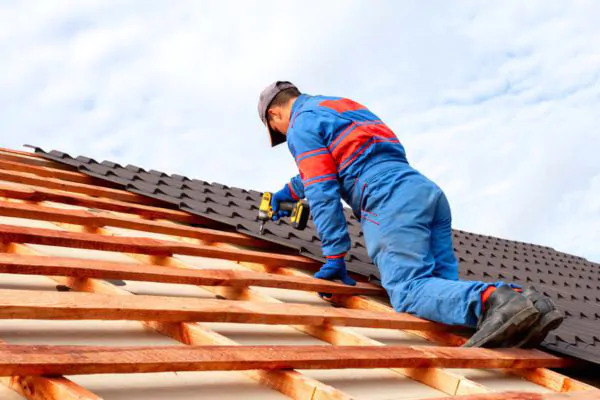
Starting a new roof installation is a big undertaking that requires careful planning and preparedness. Homeowners must handle intricate issues, such as selecting lasting materials and hiring the best contractor. When done properly, a new roof installation is expected to improve the home’s structural integrity and overall aesthetic appeal.
Here we’ll delve into the nuances of installation and provide insights into every stage. Follow along to what happens before, during the installation, and after, from preliminary planning to finishing touches.
I. Pre-Installation Steps
The groundwork for a seamless transition into construction is laid by this preparation, which is essential to producing a long-lasting and aesthetically pleasing result.
A. Initial inspection and assessment of current roof condition
The initial roof inspection is an important step in the roof installation and maintenance process. The state of the roof is carefully evaluated by contractors who note any wear, damage, or failure. This assessment establishes what needs to be done and helps to avoid future problems like loose shingles or water damage. Preventing these guarantees a seamless replacement transfer.
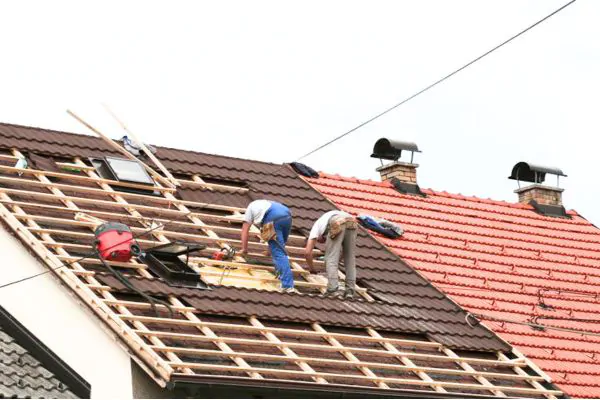
B. Choosing the right roofing materials
Deciding on the appropriate roofing materials is a significant phase in the new roofing installation process, shaped by considerations such as the homeowner’s climate, budget, and stylistic preferences. Roofing materials range widely from traditional asphalt shingles and durable metal options to luxurious slate tiles, each offering unique benefits in terms of protection, longevity, and visual appeal. This decision directly impacts the new roof’s cost, the roof’s life expectancy, and the home’s overall energy efficiency, making it essential for homeowners to weigh their options carefully with guidance from experienced roofing contractors.
C. Obtaining necessary permits and paperwork
Navigating the maze of permits and paperwork is a vital step in the roof installation process, ensuring compliance with local building codes and regulations. Homeowners must secure these documents before work can commence, a step that roofing contractors often assist with to streamline the process. This phase is imperative for legal and safety reasons, ensuring that the new roof installation adheres to standards set by the homeowner’s association, building codes, and insurance policy requirements, ultimately protecting the homeowner’s investment and peace of mind.
D. Scheduling the installation date
Scheduling the installation date is a pivotal moment in the new roof installation process, marking the transition from planning to action. This step involves coordinating with the roofing contractors to select a day that aligns with the homeowner’s availability and the contractors’ schedule, taking into account weather forecasts to avoid delays. It’s a strategic measure that sets the timeline for the project, emphasizing the roof’s importance in protecting the home from the elements and ensuring everything operates smoothly from start to finish.
II. The Installation Process
At the heart of the new roof installation process, several critical stages unfold from site preparation to the final cleanup, each playing a pivotal role in ensuring the longevity and durability of the new roof.
● Site Preparation: Safeguard the lawn, driveway, and surroundings from debris.
● Old Roof Removal: Reveal any underlying issues by carefully removing the existing roof.
● Roof Deck Inspection: Assess the roof deck thoroughly to pinpoint any repair requirements.
● Underlayment and Flashing Installation: Establish a waterproof barrier through placement of underlayment and flashing.
● Roofing Material Application: Install selected roofing materials with precision.
● Final Touches and Cleanup: Conclude the project by ensuring the site is immaculate.
These steps collectively ensure that the roof installation not only meets but exceeds homeowner expectations, safeguarding their homes and enhancing their overall value.
A. Preparation of the site
Before a single shingle is laid or any nail is driven, preparation of the site is the bedrock of a flawless new roof installation process. Roofing contractors initiate this phase by implementing protective measures to safeguard the homeowner’s lawn, driveway, and nearby landscaping from potential damage caused by falling debris. By covering these areas with tarps and strategically placing dumpsters for waste collection, they ensure a clean and safe environment, setting a professional tone for the project’s entirety.
B. Removal of the old roof
The removal of the old roof marks a critical juncture in the new roof installation process, where roofing contractors strip away existing materials, revealing any hidden defects or areas in need of repair. This step is not only about clearing the deck but also about ensuring a clean slate for the forthcoming layers, critical in preventing future issues. Highlighting the importance of precision and experience, contractors efficiently handle the disposal of old shingles, underlayment, and flashing, while carefully inspecting for signs of water damage or structural weakness that could compromise the integrity of the new installation.
C. Inspection of the roof deck
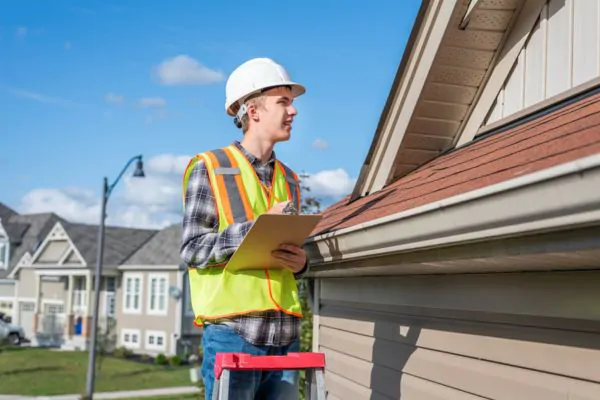
After removing the old roof, a critical evaluation of the roof deck takes place. Roofing contractors scrutinize this foundational layer for any signs of rot, structural damage, or inadequate ventilation that could jeopardize the new roof’s effectiveness and longevity. It’s a meticulous process, ensuring that the deck is sound and stable, ready to support the layers of the new roofing system securely.
Similar Post: Have You Inspected Your Shingled Roof?
D. Installation of underlayment and flashing
Following the comprehensive examination of the roof deck, the roofing installation of underlayment and flashing commences, a pivotal step in building a waterproof barrier against water intrusion. This phase involves the precise application of waterproofing materials like tar paper or synthetic fabrics across the entire deck, complemented by the strategic placement of metal flashing around edges, valleys, and protrusions such as chimneys and vents to prevent water damage.
E. Installation of new roofing materials
The pivotal moment in the new roof installation process is the application of new roofing materials, where each chosen material, whether it be traditional asphalt shingle, sleek metal, elegant slate, or another selection, is carefully positioned and securely fastened. Roofing contractors, equipped with nail guns, adhesives, and a keen eye for precision, work systematically to cover the prepped deck, ensuring each shingle, tile, or metal sheet overlaps correctly to form an impenetrable barrier against the elements.
Related Post: The Best Roofing Material For Homes In New England
F. Final touches and clean-up
As the new roof installation process draws to a close, roofing contractors engage in the final touches and clean-up, thoroughly inspecting the work to ensure every aspect of the roof is finished to perfection. They remove all construction debris, nails, and excess materials, utilizing magnetic sweepers to capture stray nails that may pose hazards. This point of the process is not just about leaving the site in immaculate condition but also about confirming the integrity and completeness of the installation, ensuring the homeowner’s property is both visually appealing and structurally sound.
III. Potential Challenges and Solutions
During a roofing installation journey, homeowners and contractors may face hurdles. Inclement weather poses delays and requires adaptability. Hidden surprises, like structural issues post-roof removal, demand swift attention. Clear communication between homeowners and the roofing team is crucial for trust and understanding. Addressing challenges with foresight and agility turns a complex project into a triumph of home improvement.
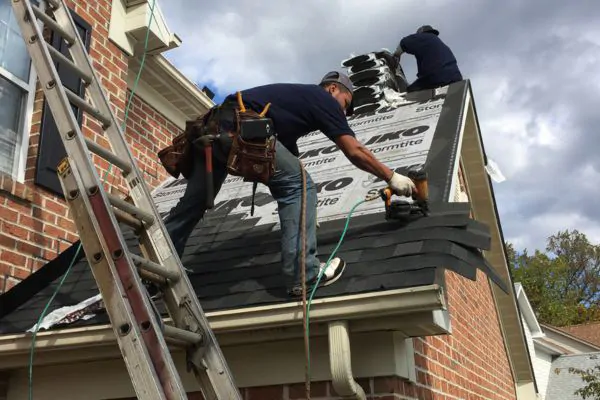
A. Dealing with inclement weather
One of the most unpredictable elements of a roof installation is the weather, which can abruptly halt operations and push timelines off course. Roofing contractors counteract these challenges by closely monitoring forecasts, strategically scheduling work during periods of anticipated clear skies, and promptly securing the construction site against impending storms or high winds. This proactive approach minimizes delays and ensures that the new roof installation proceeds with minimal disruption, showcasing the adaptability and efficiency that are hallmarks of experienced professionals in the roofing industry.
B. Unexpected structural issues
Uncovering unexpected structural issues during the removal of an old roof is a common obstacle in the new roof installation process. These surprises, which may include hidden rot in the wood or compromised support beams, require immediate expert attention to prevent long-term damage and ensure the overall success of the installation. Roofing contractors, with their experience in making skilled assessments, quickly devise and implement effective solutions, whether it involves reinforcing the structure or replacing damaged sections, thereby keeping the project on track and protecting the home’s integrity.
C. Communication with the roofing team
Maintaining open and clear lines of communication between homeowners and the roofing team is a cornerstone of navigating a new roof installation process. This interaction ensures that homeowner expectations align with the project’s progress, facilitating swift decision-making and adjustments as required. It fosters a relationship built on trust and mutual understanding, which is instrumental in overcoming any challenges that arise throughout the journey of transforming the home’s roof.
You might like: 7 Reasons To Hire A Professional Roofing Company
IV. Post-Installation Steps
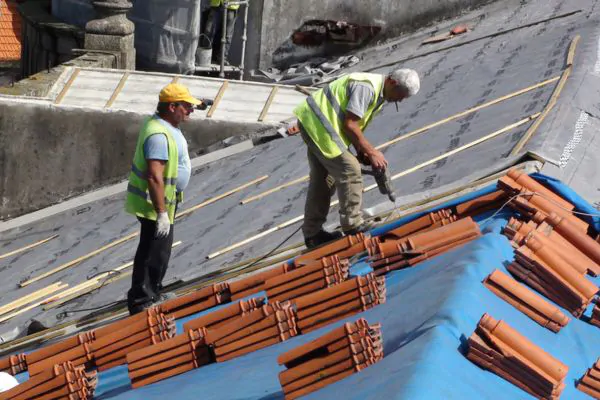
As the new roof installation process nears completion, several steps solidify its success. A final inspection and walk-through confirm adherence to standards. Homeowners receive warranty details and maintenance tips, empowering them to preserve the roof’s integrity. This is also when any remaining concerns can be addressed. These elements mark the culmination of a rigorous project, laying a strong foundation for the home’s protection in the future.
A. Final inspection and walk-through
The crowning achievement of the new roof installation is the final inspection and walkthrough. This is when the contractor and homeowner inspect the work to make sure it complies with guidelines. Every aspect, including the accuracy of the flashing and tile alignment, is checked for quality. This sets the stage for a long-lasting, attractive roof of high quality and satisfactory customer standards.
B. Warranty information and maintenance tips
Warranty information and maintenance advice ensure the longevity of a new roof. The warranty covers materials and craftsmanship, ensuring quality and peace of mind. Customized maintenance guidance helps homeowners recognize wear indicators and take preventative measures, enhancing the roof’s resistance to weather and prolonging its life.
C. Addressing any lingering concerns
Addressing any lingering concerns is a crucial final step in the new roof installation process. It offers homeowners the opportunity to voice any doubts or observations they may have, ensuring that every aspect of the project is transparent and up to their standards. This practice underscores a roofer’s commitment to customer satisfaction and the overall success of the roof installation, building trust and confidence that extends far beyond the project’s completion.
Frequently Ask Questions
1. How do I prepare my house for a roof replacement?
Remove fragile items from walls and shelves, cover valuables in the attic, and clear driveways or surrounding areas to prevent damage from falling debris.
2. Should I stay home during roof replacement?
Staying home is optional. Roof replacements are noisy and disruptive, so some prefer to leave. Just be available for any questions or issues that may arise
Should I replace my roof if it’s not leaking?
Yes, if it’s showing signs of age or wear. Proactively replacing an old roof can prevent future leaks and potential damage.
4. How long should a new roof take to install?
Typically, a roof replacement takes 1-3 days, depending on the roof’s size and weather conditions.
5. How often should a roof be replaced?
It varies by material. Asphalt shingles last around 20 years, while metal and tile roofs can last 50 years or more.
6. What if it rains during roof installation?
Roofers monitor the weather and will temporarily cover exposed areas to protect your home if rain is forecasted.
V. Conclusion
Understanding the new roof installation process is crucial for success. It involves meticulous steps, from pre-installation preparations to post-installation evaluations. Initial inspections, material selection, and permit acquisition set the stage. Precision is key during installation, ensuring both aesthetics and durability. Challenges like weather disruptions and structural issues require skilled navigation and clear communication.
Concluding steps, such as final inspections and maintenance tips, solidify success. Experienced contractors like Coastal Roof Experts South Shore MA play a vital role throughout. This comprehensive approach ensures long-term satisfaction and peace of mind for homeowners, emphasizing the importance of each stage in achieving a durable, visually appealing roof.



